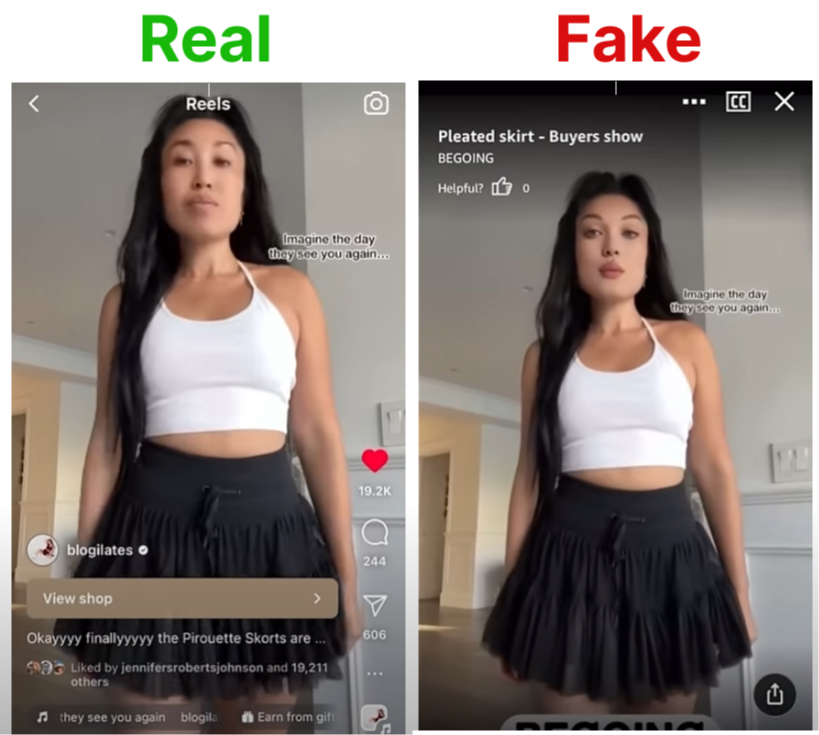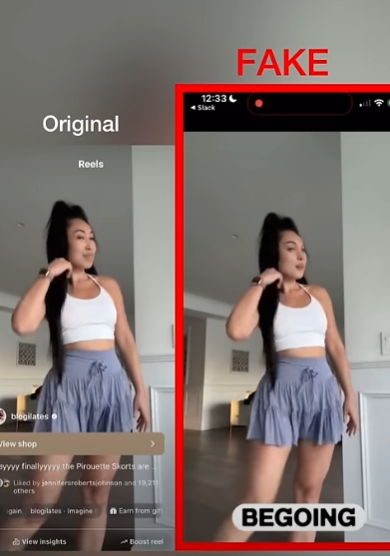
News: Deepfake of a Popular Blogger Used to Sell Counterfeit Brand Clothing
Cassey Ho, a prominent fitness blogger and creator of the popular fitness platform Blogilates, was deepfaked. How did it happen? What did it look like? And most importantly, how can you protect your videos from being deepfaked too? Find out in this article.
A little bit about Cassey Ho (Blogilates)
Cassey Ho is a prominent figure in the fitness industry, known for her influential role as a fitness blogger, entrepreneur, and creator of the popular fitness platform, Blogilates. Born on January 16, 1987, in Los Angeles, California, Ho developed a passion for fitness and health from a young age.
In 2009, Ho launched Blogilates, a blog and YouTube channel dedicated to Pilates workouts, healthy recipes, and lifestyle advice. What started as a passion project quickly gained traction, thanks to Ho's infectious energy, innovative workout routines, and engaging personality. Her unique approach to fitness, which combines Pilates with elements of pop culture and music, resonated with a wide audience, particularly young women seeking fun and effective ways to stay fit.
Cassey Ho isn't just a fitness instructor; she's a creative entrepreneur. In addition to her popular YouTube channel, Blogilates, Cassey is the founder and designer behind Popflex, an activewear brand. Popflex offers a range of stylish and functional workout clothes, including skorts, hoodies, leggings, and more.
What happened?
In her video, Blogilates tells her subscribers that someone decided to steal her brand-designed skorts, but that someone didn’t even try to create real ad videos or photos. They simply took her ad videos and replaced her face. The results are shocking!

The new face looks real, and even some bloggers bought that skort from that fake Amazon shop!

How to protect your videos on TikTok from deepfake manipulation
Since we're experts in the facial recognitino technology and biometrics, here are some tips on how to protect your videos on TikTok from deepfake manipulation.
Unfortunately, there's no foolproof way to completely protect your videos from deepfakes on TikTok (or any platform for that matter). Deepfake technology is constantly evolving, making it a challenging situation. However, here are some steps you can take to make it harder for someone to create a deepfake of you:
Enable privacy settings. TikTok offers various privacy settings that allow users to control who can view, download, and interact with their videos. By adjusting these settings to limit access to your content, you can reduce the likelihood of your videos being targeted for deepfake manipulation.
Watermark your content. Adding a visible watermark, such as your username or a unique identifier, to your TikTok videos can deter potential deepfake creators from using your content without permission. Watermarks serve as a form of digital signature, making it easier to identify the original source of the video.
Monitor your online presence. Stay vigilant and regularly monitor your online presence to identify any unauthorized use of your videos. Use reverse image search tools or specialized deepfake detection software to track instances of your content being manipulated or repurposed without consent.
Educate yourself and others. Familiarize yourself with the characteristics of deepfake videos and educate your followers about the risks associated with them. By raising awareness and promoting media literacy, you can help prevent the spread of deepfake content on TikTok and other social media platforms.
Report suspicious activity. If you encounter a deepfake video or suspect that your content has been manipulated, report it to TikTok immediately. The platform has mechanisms in place to address violations of its community guidelines, including the spread of deceptive or harmful content.